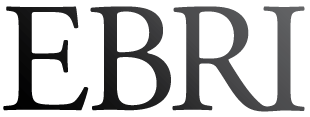Summary
This Issue Brief is the ninth annual cross-sectional analysis of the EBRI IRA Database. It includes results on the distribution of individual retirement account (IRA) types and account balances, contributions, rollovers, withdrawals, and asset allocation in IRAs for 2017, the latest data available.
The EBRI IRA Database is an ongoing project of the Employee Benefit Research Institute (EBRI) that collects data from IRA-plan administrators across the nation. For year-end 2017, it contains usable data on 11.3 million accounts owned by 9.2 million individuals, with total assets of $1.30 trillion. For accounts in the database, the IRA type, account balance, contributions made, rollovers transferred, withdrawals taken during the year (if any), the asset allocation, and certain demographic characteristics of the account owner are included (among other items).
This update shows the importance of being able to measure not only unique IRA balances but also the combination of all IRAs an individual owns to determine the potential total IRA savings the individual has by aggregating their multiple IRAs. Indeed, the overall, cumulative IRA average balance per individual is 23 percent larger than the average IRA balance per account.
Here are the key findings in this annual update:
Balances
- The average IRA account balance in the database was $114,383 at year-end 2017. The average IRA individual balance (combining all accounts owned by the individual) was $141,144.
- Average IRA balances differed significantly by the IRA type: Roth IRAs had the lowest average balance, while Traditional IRAs originating from rollovers had the highest average balance.
Contributions and Rollovers
- Just over 12 percent of all accounts in the database received a contribution in 2017, with an average contribution of $3,913. Roth IRAs were more likely to receive a contribution than Traditional IRAs (26.6 percent vs. 5.7 percent).
- Assets from rollovers to IRAs in 2017, regardless of the source, amounted to nearly 12 times more than the total contributions in the database. The average and median rollovers to a Traditional IRA in 2017 were $94,879 and $14,454, respectively; the average contribution to a Traditional IRA in 2017 was $4,163.
Withdrawals
- Just over 21 percent of individuals owning a Traditional or Roth IRA took a withdrawal in 2017. However, while only 3.3 percent of individuals with a Roth IRA took a withdrawal, 25.6 percent of individuals with a Traditional IRA took a withdrawal.
- The overall IRA withdrawal percentage was largely driven by activity among individuals ages 70-½ or older owning a Traditional IRA — the group required to make withdrawals under the required minimum distribution (RMD) rules. In contrast, among owners under age 60, 9.0 percent or less of any age group had a withdrawal. Withdrawals are more likely to occur from Traditional IRAs than from Roth IRAs, regardless of age.
- One-quarter of IRA owners ages 71 or older were found to have withdrawn an amount from their Traditional IRA in excess of their RMD.
Asset Allocation
- Just under one-half (46.4 percent) of all IRA assets were allocated to equities, although this varied with owner age, account balance, and IRA type. There were minimal differences in asset allocation trends by gender.
- Those owning Traditional IRAs had, on average, lower allocations to equities. Furthermore, equity allocations peaked for both Traditional and Roth IRA owners ages 45–54. IRAs with the largest and smallest balances had the lowest combined exposure to equities (including the equity share of balanced funds added to the pure equity funds).
- Accounts of less than $5,000 were highly concentrated in money, which is a result of automatic rollovers from 401(k) plans with balances of $1,000 up to $5,000 that are defaulted into money.
- Overall, in 2017, 24.4 percent of IRAs had less than 10 percent in equities and 28.6 percent had more than 90 percent in equities, so-called “extreme allocations” in a particular asset category. Furthermore, 16.4 percent of IRAs had more than 90 percent of their assets in bonds and money.
Longitudinal
- The average IRA balance increased 22.4 percent from 2013 ($93,441) to 2017 ($114,383). The average contribution to a Traditional or Roth IRA slightly increased from $3,880 in 2013 to $3,913 in 2017.
- The asset allocation of IRAs changed very little between 2013 and 2017, with the asset categories having allocations within 2 percentage points of each other between those years.

